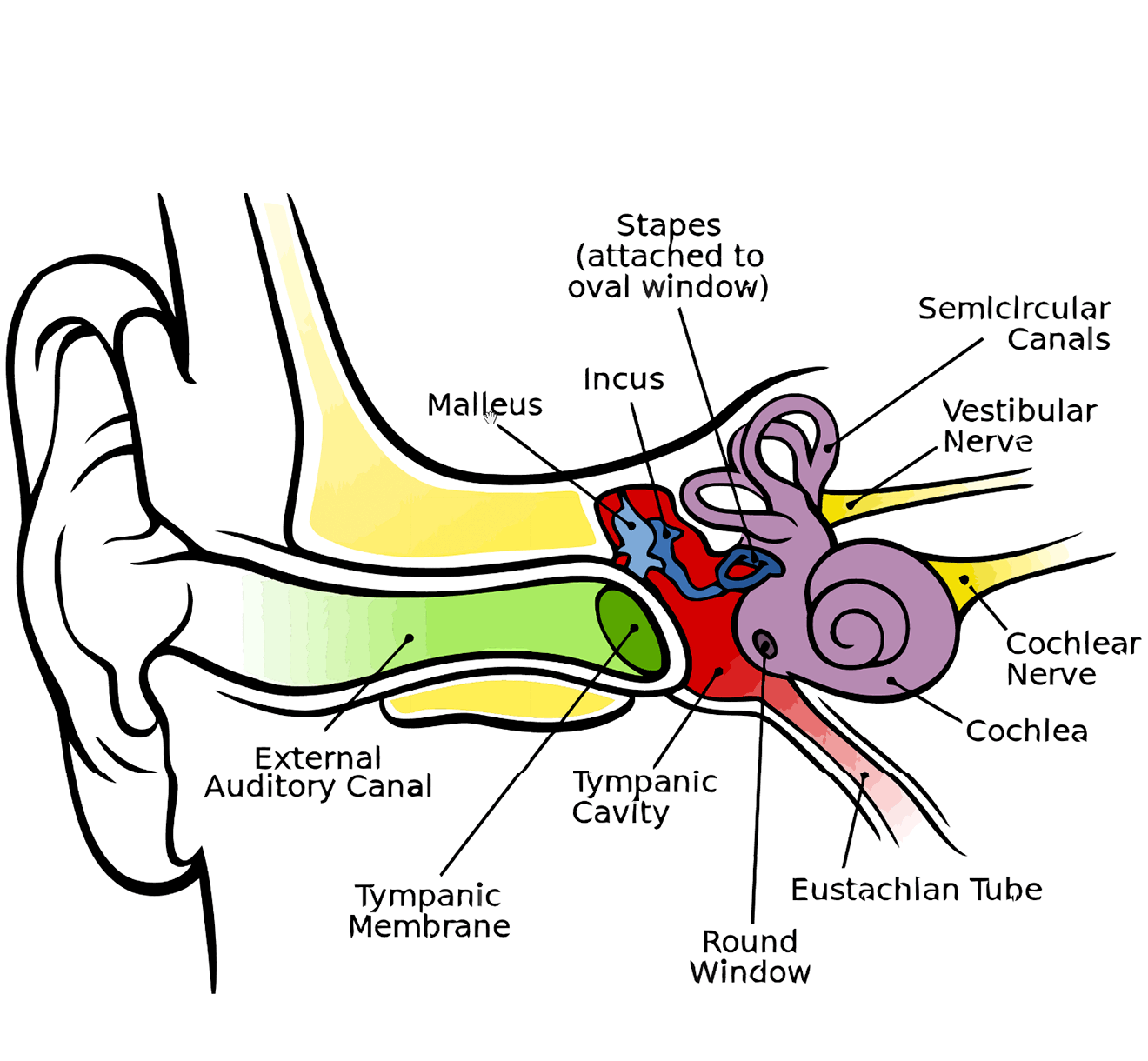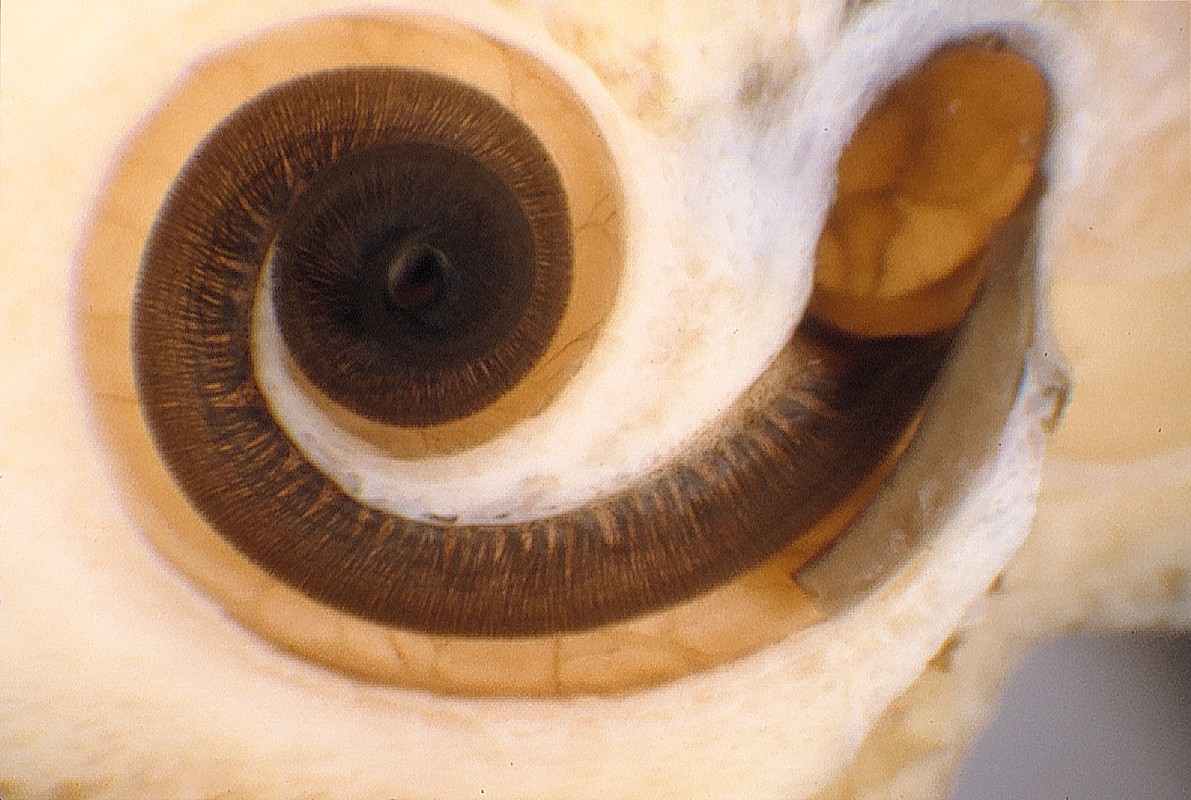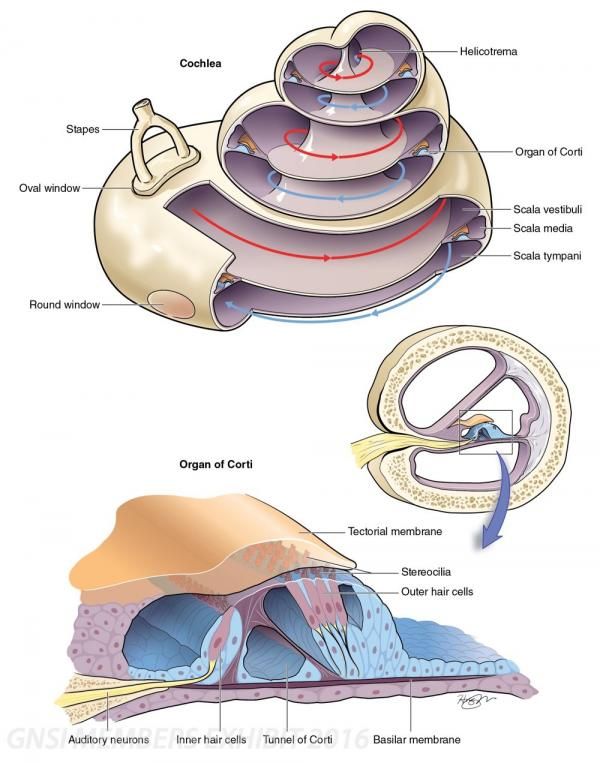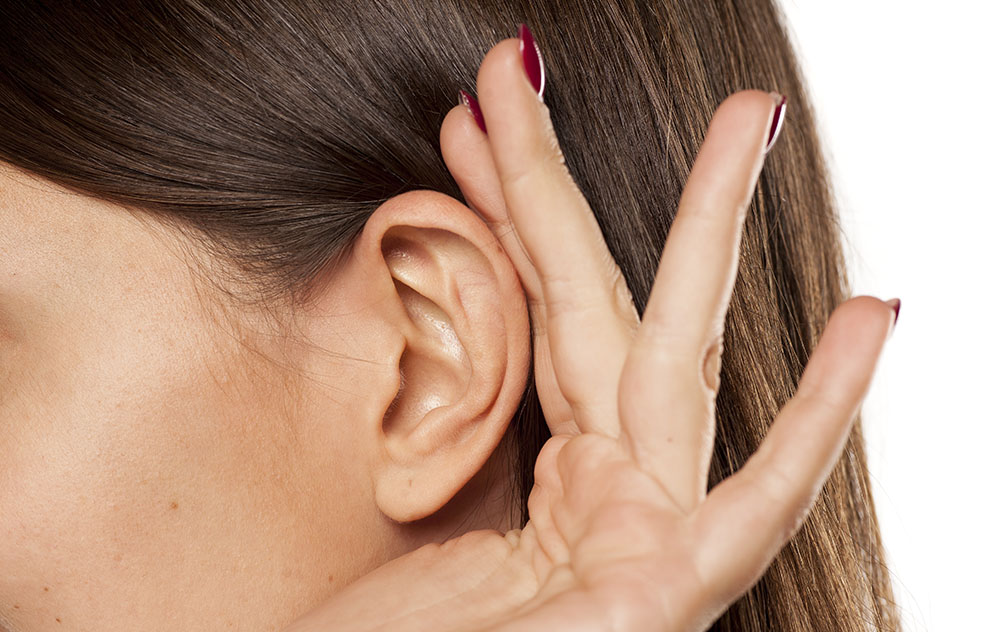Hearing Loss and Vitamins
 Sunday, February 27, 2022 at 10:15AM
Sunday, February 27, 2022 at 10:15AM Is it natural to expect hearing loss with age?
People experience different degrees of hearing loss depending upon events of loud noises during their lifetime. People in the Military who fly planes or shoot guns, even though wearing ear plugs, develop hearing loss more than office workers.
Here is a cute animated educational short on how hearing works. video
Can hearing loss be restored?
These next few articles have some ideas. article article article
In order to appreciate some of these advanced concepts that might improve, slow down, hearing loss, it is necessary to understand how the ears work with the brain to get to sound.  This next reference is very good to explain and show this process. article
This next reference is very good to explain and show this process. article
Essentially, vibrating air hits the eardrum and is transmitted through 3 small funny shaped bones connected together into the cochlea. The cochlea looks like a snail shell. article As the now finally tuned and separated vibrations move through the liquid filled cochlea, they stimulate the movement of different size small hairs. The hairs at first start out thicker and get progressively thinner. Low sounds to high sounds. The hairs that are stimulated to vibrate change the movement into an impulse to travel along the auditory cochlea nerve to the brain for interpretation. And that is where you finally get an orchestra of sound differentiation and you can hear each instrument playing the song. Past experience helps the brain analyze the different sounds for future hearing analysis.
One major problem for hearing loss occurs in the cochlea where the really fine thin hairs start to break down. And at first, it becomes harder to hear the high sounds.  Once these hairs start to deteriorate, it was assumed that that was the end for that range of sound and hearing aids were needed to amplify whatever thin hairs were left to give the brain more to consider when the analyzing starts.
Once these hairs start to deteriorate, it was assumed that that was the end for that range of sound and hearing aids were needed to amplify whatever thin hairs were left to give the brain more to consider when the analyzing starts.
The next question concerns, is there any way to slow down this hair deterioration?
This is where one of the theories in the aricle above comes into play. Some animals can repair these hairs. While we wait for Scientists to figure out this mystery, are there dietary or vitamins factors that could influence the health of these hairs?
And some research has found that answer to be yes. First some facts on the hair cells in the cochlea. This reference has great details, but a little technical.
Here are the processes that make up the miracle of hearing. Vibratory waves in the air travel down the ear channel to the eardrum and onto three very small fine shaped bones, much like a tuning fork, and moved into the cochlea. Here, the vibrations travel along a spiral tube with rows of different size hairs, larger at first for low sounds and then thinner at the end for very high pitch sounds. These hairs turn the vibrations into electrical impulses and sends these to the brain for analysis and it is in the brain where sound is born.

Here are the precesses for consideration:
- Clear opening of ear channel to eardrum (infections cause swelling of tubes leading into, plus wax can build up)
- Structure of three small bones connected together to relay vibrations
- Integrity of hair shaft structure (they start to break down if exposed to loud sounds constantly, especially the high pitch thin shaft ones)
- Integrity of the auditory nerve cells (especially electrical transfer of impulses)
- Nerve synapse neruotransmitters to jump impulses from nerve tip to next nerve
- Control of free radical damage to the sturctures and processes involved
- State of tissues and nerve cell inflammation
- Maintance of healthy blood vessels and flow of nutrients for optimal functions and processes
- And of course, genetics can be a factor
There are vitamins and other nutrients that play roles in these processes in other parts of the body. What is not really known yet, is how much these nutrients would inflence the structures in the inner ear? There is some evidence emerging for some degree of positive influence. More research is vitally needed.
Article on 5 nutrients that should help protect hearing. (from a Hearing Aid company) From the same company, a greater scope analysis of related things that protect hearing, and health in general as people age. article
This next reference has good general information on vitamins and hearing concepts from a Healthy Hearing Club. Lots of people contributing articles plus some Doctors. Have not yet verified with scientific references. Stay tuned.
What the Scientific Research Found
This study from the Health Professionals study did not find support to protect hearing loss from certain antioxidant vitamins tested, Vitamins A, C, E, Beta carotene, and Folic Acid. Folic acid was the lone exception for some positive influence in men over 60. ref
The next report came out of the Nurse's Health Study II. ref Looking at mainly the same vitamins but including some family members of carotenoids. Here is what this study found; "statistically significant inverse associations between higher intake of β-carotene and β-cryptoxanthin and risk of hearing loss" in mostly women. Does gender play a role? With vitamin C, this study eported a negative finding with more hearing loss at higher vitamin C amounts.
This next study tried to mimic an occupational sound environment to test antiioxidant vitmains. ref Here is what was found: "Vitamin B12, folic acid, and NAC may have a protective effect as an antioxidant on reducing occupational hearing loss." NAC stands for N-Acetyl-L-Cysteine, a nutrient involved with building a major cellular antioxidant nutrient called Glutathione. Glutathione Peroxidase is one of two major cell detox antioxidants. The other being SOD, SuperOxide Dismutase. SOD comes into play with the study 2021 below.
So far, all the studies have been looking at using antioxidants to protect against radical damage from oxidation. Not one has looked at nerves and nerve impulses.
A Major Breakthrough in Preventing Noise-Induced-Hearing-Loss (NIHL)?
This next study found a way to prevent hearing nerve loss from loud sounds in mice. Two nutrients were involved. (NR and NAD+) NR stands for a form of niacin or vitamin B3, Nicotinamide Riboside. NAD+ stands for Nicotinamide Adenine Diniucleotide. A supplement of NR is made by Niagen. NR builds up NAD+ levels in system after a few weeks. Info article NAD+ is the action nutrient but is very unstable as a supplement.
Here is what the study found: "The researchers set about trying to prevent this nerve damage by giving mice NR before or after exposing them to loud noises. NR was successful at preventing damage to the synaptic connections, avoiding both short-term and long-term hearing loss. What’s more, NR was equally effective regardless of whether it was given before or after the noise exposure." This is very exciting since it is very difficult to first, get nutrients into the middle ear, and second, to have them exert a postive impact.
Of course, now it is necessary to conduct studies to see if this works in the human body as it did in mice. In further mice research, it was discovered that it was NAD+ working on SIRT3 protein and this protein was doing the protecting of noise-induced-hearing-loss. NIHL. Another recent positive study in mice.
Here is a sideline to this SiRT3 protein for heart health. ref SIRT3 levels appear to be related to longevity in humans. To increase SIRT3, the two things found are calorie restriction and exercise. SIRT3 also looks like it protects fatty acids from oxidation plus protects ATP, the energy molecules, in cells. This reference (2018) has some good info in the effects of sirtuins in humans, or at least their potential. Check out the chart.
Another couple of years, and this study (2020) adds even more to the sirtuin benefits for humans (potential). Check out this from the study Authors: "Sirt3 is a mitochondrial enzyme, and it deacetylates and activates mitochondrial enzymes to regulate diverse mitochondrial functions, such as ATP production, reactive oxygen species (ROS) management, β-oxidation, ketogenesis, and cell death [31]." Mitochondria are the energy producing plants of the cells. They also generate quite a bit of ROS for antioxidants to eventually neutralize.
Now where are the human studies on hearing? Another new mouse, study 2021 Here is the title:
"Sirtuin-3 Protects Cochlear Hair Cells Against Noise-Induced Damage via the Superoxide Dismutase 2/Reactive Oxygen Species Signaling Pathway"
Here is the discussion by the Authors for what a human study could use as a target to study hearing loss. "These findings suggest that insufficient SIRT3/SOD2 signaling leads to mitochondrial oxidative damage resulting in hair cell injury in NIHL. Thus, ameliorating noise-induced mitochondrial redox imbalance by intervening in the SIRT3/SOD2 signaling pathway may be a new therapeutic target for hair cell injury." Now, let the human studies begin!
Until that happens, here are some activities and nutrients that naturally increase sirt3: Carlorie reduction, Exercise, Nicotinamide Riboside (NR), Alpha Lipoic Acid, Acetyl L Carnitine, CoQ10, Ubiquinol (QH), Resveratrol, PQQ, Bitter Melon, NAC.
Precaution: There is always the possibility of upsetting balances with cross- or counter-related interferrance with other nutrients or functions when using supplements. Many nutrients have numerous functions and all areas should be monitored when using that nutrient. Like NAC having positive actions before cancer, but negative when cancer is active.
